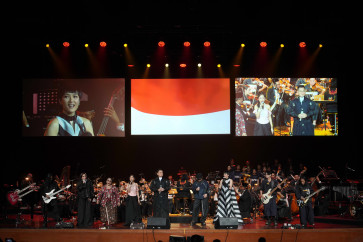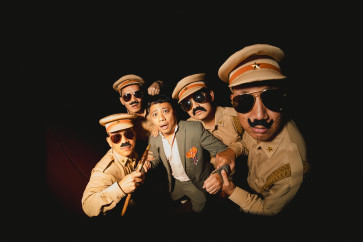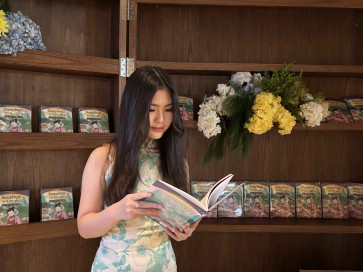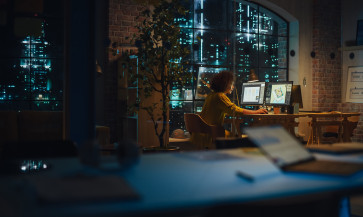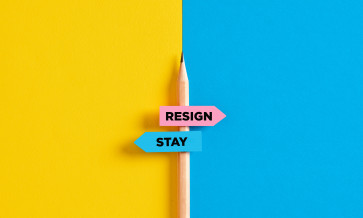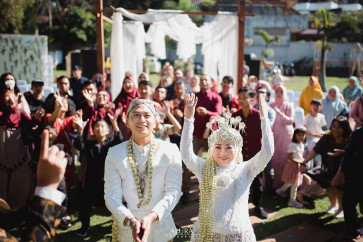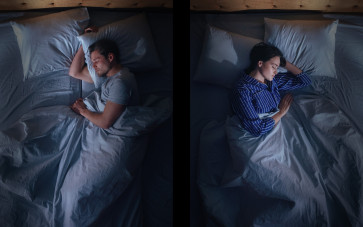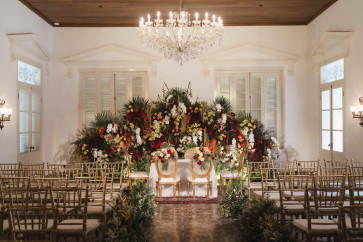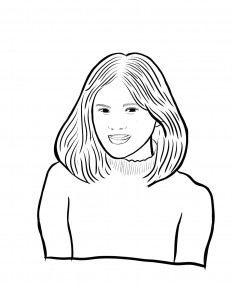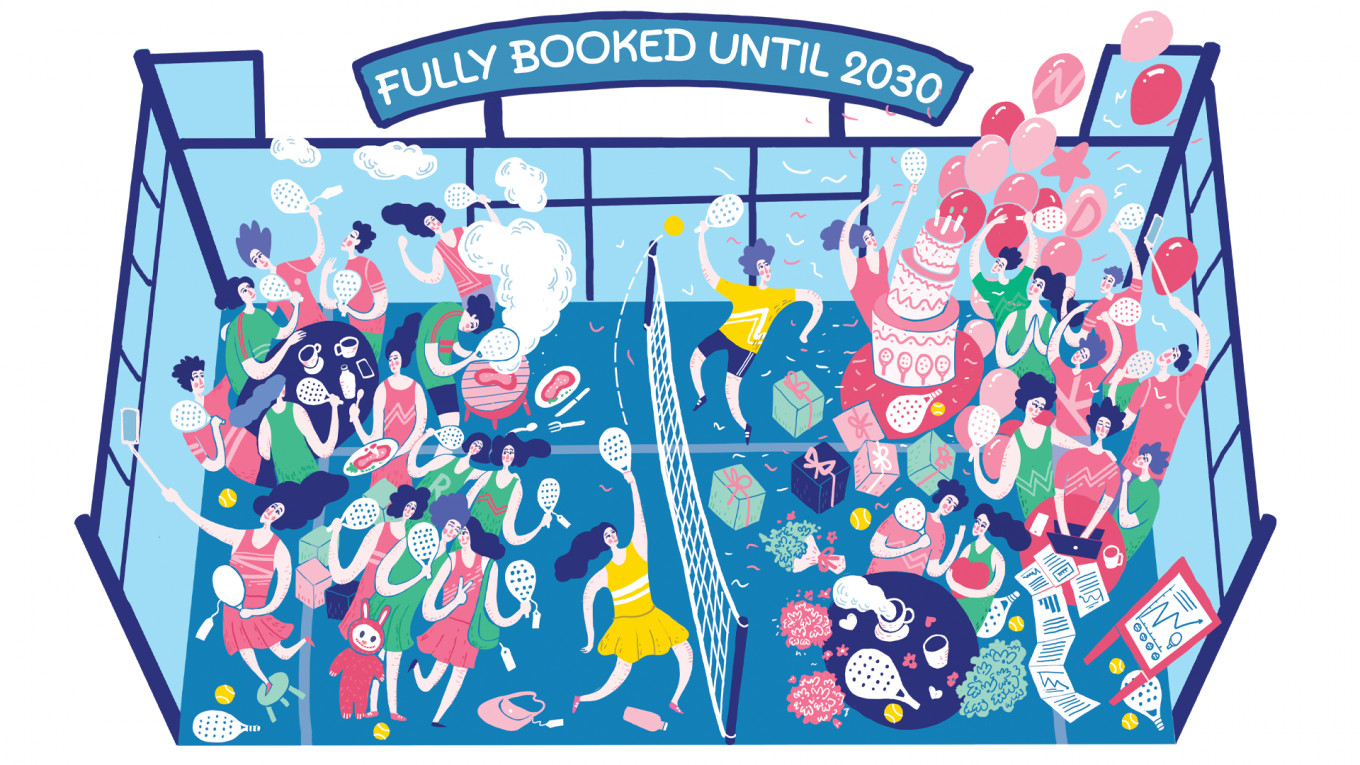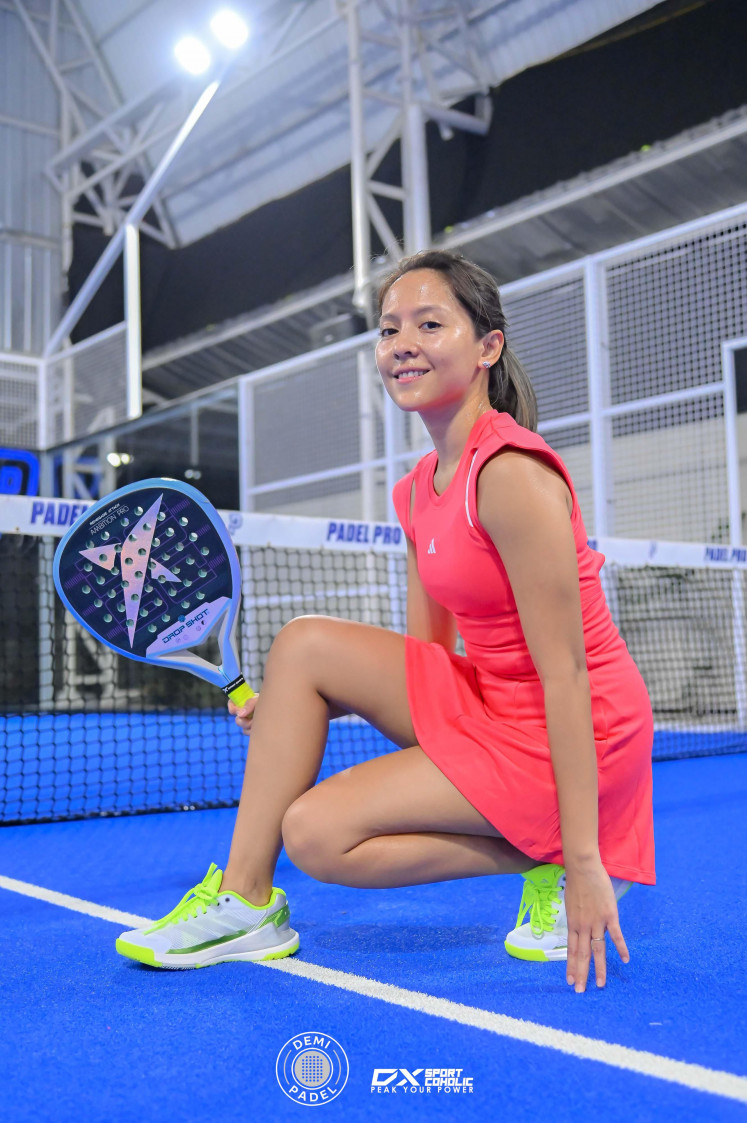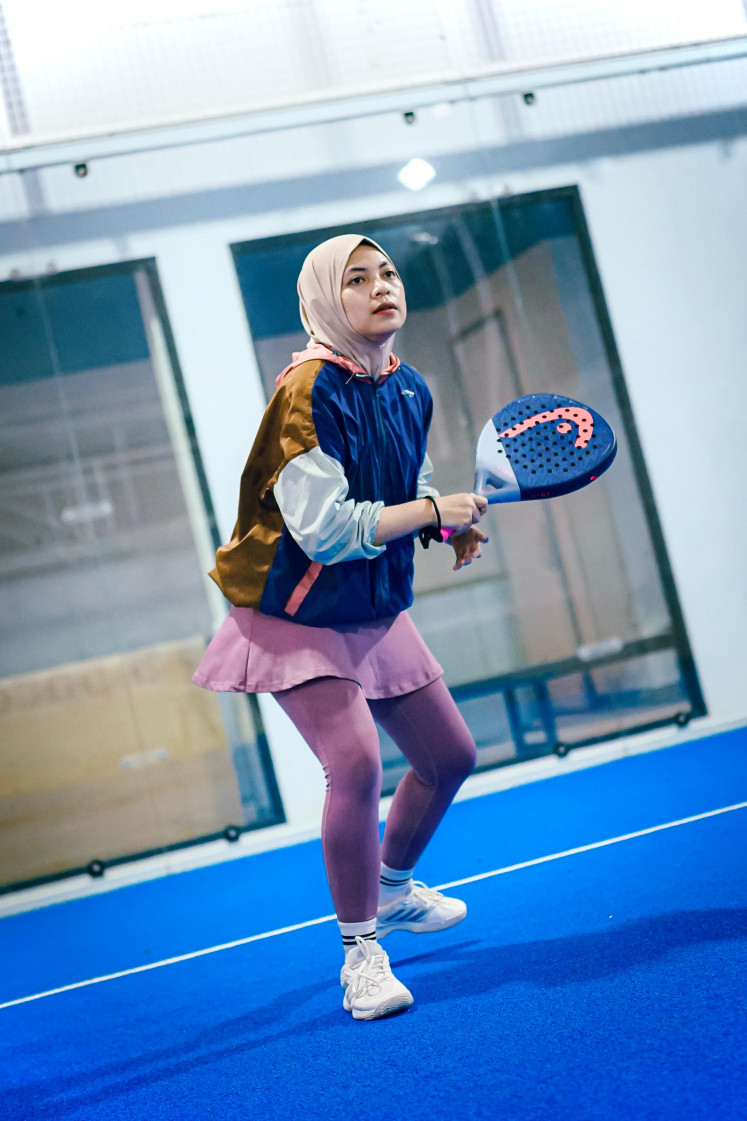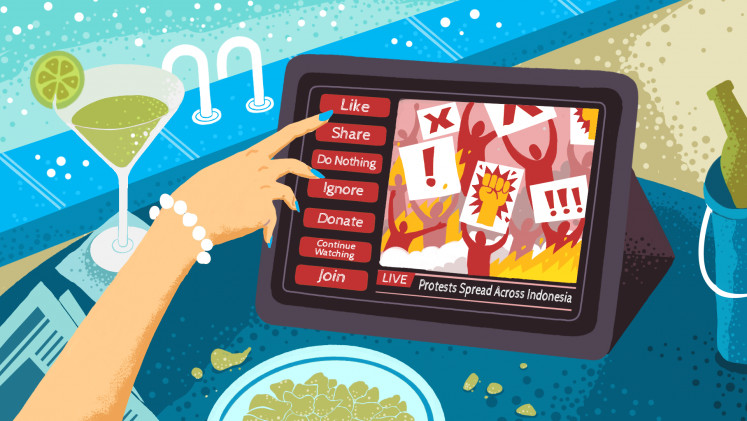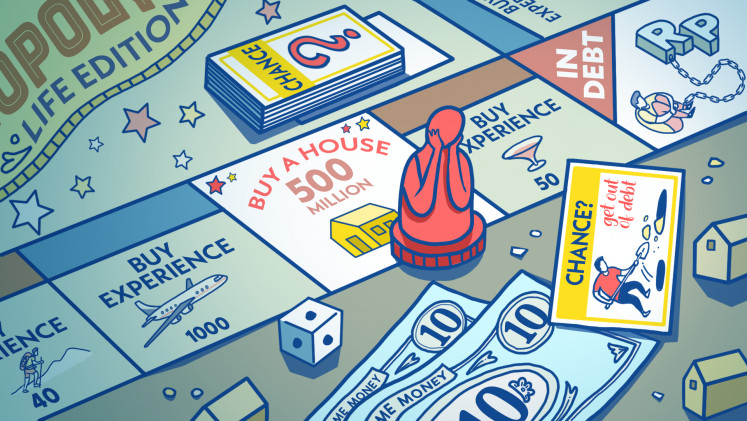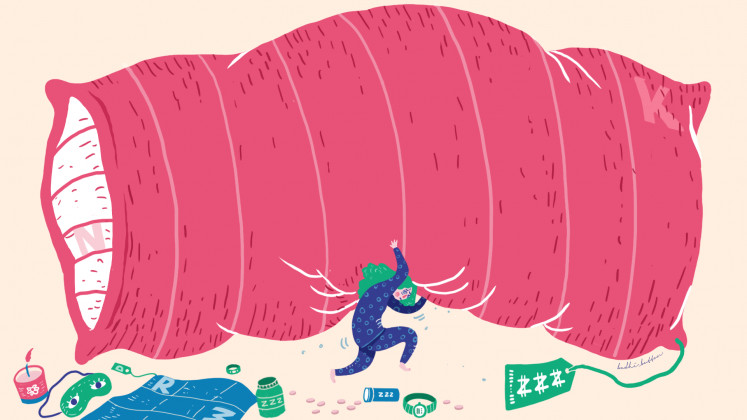If you’re starting to feel like padel is everywhere, you’re not the only one.
New courts seem to open every week. Your social media timeline is full of friends either trying it out for the first time or joining amateur tournaments, plus influencers playing brand-friendly matches to promote skincare.
Let’s face it, padel is this season’s idol. It’s pitched as accessible, social and beginner-friendly. But why? And how long will it last?
Like many skeptics, I figured Jakarta’s padel boom was mostly FOMO (fear of missing out).
“It’s the new Labubu,” I blurted to our illustrator.
After all, we’ve seen this before: aerobics in the ’80s, folding bikes during the pandemic, slow-pitch in 2023, and now, padel.

Thank you!
For signing up to our newsletter.
Please check your email for your newsletter subscription.
But keeping an open mind, I go to those who know.
Why padel?
The first answer almost everyone gives is that it’s easy to play. But so are many other sports, so what makes padel different? The second answer might hold the key: It’s social.
“Playing is easy, but becoming a player takes dedication and intention,” says actress-musician Lala Karmela, 40, whose work now mostly revolves around padel.
“It’s a partner sport, where you need to connect with your partner and build strategy. It’s not just exercise, you’re also building interpersonal skills.”
. (Courtesy of Lala Karmela)
Lala joined before padel was trendy, introduced by her half-British, half-Filipino husband who grew up playing in Spain and was looking for community after moving around so often. Through padel, they gained a circle of mutual friends.
Falah, 32, has a similar story.
“Yes, it started as FOMO, but it grew on me,” she says.
The sport gave her and her husband a way to reconnect beyond childcare and housework, while also opening doors to new social circles.
“I didn’t expect to like it, but I did. It’s a mix of workout and hangout. Especially now that I’m a stay-at-home mom, padel has become my social activity, so I don’t only talk to my kid during the day,” she laughs.
So maybe that’s the formula: FOMO brings people in, but the social element makes them stay. Still, couldn’t the same be said of other sports?
A Jakarta thing
Lala says padel reminds her of music.
“It’s social, collaborative and entertaining to watch.”
But she believes its rise in Jakarta has less to do with the sport and more with the city’s character.
“We don’t have much to do here except work, mall and party,” she says.
“Now there’s a sport that’s easy to enter, and you see public figures playing, everybody posting about it, of course people want to try.”
That seems to be a key part of the answer: Our feeds are full of influencers playing and posting.
“It’s always like this when something goes viral. It wasn’t like this with padel in Bangkok or the Philippines. Here, awareness comes from the community. People see it as a recreational activity, not just a workout,” Lala adds.
Luis Aloma, cofounder and chief community officer of Reclub, the app where most local padel communities form, agrees that it’s not so much about the sport, but mostly about the human connection made on courts.
“The formats that they play [in Jakarta] focus on changing partners every few rounds, so you’re constantly meeting and connecting with new people,” he says.
“Without the communities, I don’t think padel would be as viral or as happening as it is now." - Okie Imanto, WePadl
In the end, padel’s rise doesn’t have a single answer. It’s an accumulation: the ease of entry, the social aspect, influencers fueling visibility, and apps like Reclub supporting community growth. Add to that Jakarta’s obsession with anything aspirational, expensive and a little exclusive, and you have the perfect recipe for a sport to go viral.
The right thing, at the right time, with the right crowd.
Beginner-friendly, they said
But when I finally tried padel for this article, I found its friendliness had limits. The irony is that for a sport praised as beginner-friendly, it now feels intimidating, even hostile, to newcomers.
That’s why Zika, 30, is happy to remain a padel virgin.
“Maybe it’s because I think padel is intimidating? I see people’s Insta stories and it just looks like those pretty gangs you knew in high school,” she says.
I was a virgin too, until last weekend. Like Zika, I hesitated: I can barely play tennis, now I’m supposed to learn a new technique? Do I even like competitive sports? Why do I have to play with people when yoga’s Bakasana already keeps me humble enough?
But what really put me off was the culture. Padel is everywhere, yet it still feels like a clique. Or maybe, as I kept telling myself, I was just being a hater.
It took me more than a week to find a slot. Courts are impossible to book, and when I tried Reclub, most “open play” sessions shouted NO FIRST TIMER in bold. Apparently, beginners ruin the “vibe”. Competitive players seem to have forgotten they were once new, frankly, many still are.
When I finally found a slot at a normal hour (Sunday morning, not Wednesday 2 a.m., yes, that’s a real thing), it was at a half-finished court in West Jakarta. That’s how desperate I was.
And when I did play, the irony hit me.
My partner couldn’t even serve properly but still told me not to hit too hard whenever I messed up. Instead of learning volleys, we jumped straight into matches. It was the blind leading the blind.
The whole experience just confirmed my theory: Padel is strangely competitive, even among so-called beginners. I’d never encountered a sport so eager to shut out its own newbies.
Costly barriers
“People pay a lot to play, so if they end up with a partner who can’t rally, it ruins the vibe,” says Falah, explaining the “no first timer” rule.
And “a lot” is right. Like tennis, good rackets start around Rp 1 million (US$61.16) and go up from there. Specialized padel shoes promise better grip and agility, also at a premium.
Courts and coaches are where costs spike: Agora’s House of Padel charges around Rp 500,000 per hour, while coaching starts at Rp 1 million per person per hour. For comparison, my regular tennis court charges Rp 800,000 for a two-hour session with eight players, a coach, an assistant coach, balls and a ball boy.
Then there’s the aesthetic side: matching outfits, cute bags, headbands, even photographers-for-hire. Multiply that by regular sessions, and the sport quickly becomes a financial commitment.
Add the costs to the cliquishness, and the paradox is clear: A sport popular for its easy entry now almost feels like a gated community.
Lala sees the changing culture as a natural evolution.
“In the beginning, everyone was new, so it was welcoming. Now people are addicted and competitive, and that’s normal in sport. At the end of the day, competitiveness is part of it.”
If padel growth stalls in Jakarta, this gatekeeping may be why.
But Lala is quick to point out that not every community is like that. Some set the bar high, yes, but others focus on fun and welcome fresh faces, even offering private starter sessions to ease people in.
“Our community can host it for you and your friends if you want,” Lala offers.
Which brings us to what may be the real key to this sport’s rise and staying power: padel communities. These fast-growing groups don’t just organize games, they lower the barriers and sustain interest, all while building a new business model around it.
The role of padel communities
According to Okie, cofounder of WePadl venue in Cilandak, community hosts or owners are as responsible for padel’s rise as influencers. A typical padel community has about 100 to 200 members, he says, but the big ones have 2,000 to 3,000 members.
“Without the communities, I don’t think padel would be as viral or as happening as it is now,” he says.
These community owners are players who book courts, wrangle participants, provide balls, sometimes coaches and keep the games running. In doing so, they make padel more accessible, and for some, it’s become a business.
. (Courtesy of Falah Maulida)
Falah cofounded Padel Bloom in June after realizing her padel habit was getting expensive. Charging Rp 130,000 (US$7.95)–Rp 179,000 per person, she covers costs and earns a margin, playing for free while making at least Rp 300,000 a session.
“At Rp 130,000, you’ll see the suburban moms. At Rp 180,000, it’s the international-school moms,” she laughs.
Lala did something similar with Demi Padel, starting on Reclub and now boasting over 2,000 members with daily sessions, tournaments and even branded events.
“Padel has become a side hustle for me,” she says.
“But Demi Padel is still a community, not really a business. What we earn goes back into it.”
Padel venues are now catering to this, offering discounted bulk packages, 20, 50, even 100 hours, for hosts to resell at markups of 30 to 50 percent more.
“They can charge higher because they offer services, like providing the balls or bringing food and drinks,” Okie says.
Bubble or staying power?
For now, the craze shows no signs of slowing: more courts, more clubs, more communities, more brands tapping in, more slightly absurd events, like a $2,000 padel retreat in Bali or a “Padel and Matcha Whisking” crossover.
But Sweden’s padel bubble burst after overbuilding, and Indonesia’s pandemic cycling boom fizzled too. The same could happen here.
But that’s tomorrow’s problem. Today, we’re still enjoying the honeymoon period.
The Perkumpulan Besar Padel Indonesia, recognized by the National Sports Council (KONI), is pushing to formalize the sport. Lala, also PR for the Jakarta Padel Committee, believes padel can become “the next golf, a mix of sport and social life that becomes widely accepted”.
Falah is more pragmatic: “Right now it’s over-demand. Everyone is scrambling for slots and prices are high. But by the end of the year, at this development rate, there’ll be enough courts, and the costs, from rackets to court time, will finally go down.”
As for me, I’ll wait. I’m curious who will still be here when the heat cools: not the influencers or the hype-chasers, but the ones who love the game itself. And just as curious what comes next. Pickleball? A return to tennis? Freediving at GBK’s Aquatic?
Whatever it is, one thing is certain: Jakarta will always find its next trend.
— With contributions from Aqraa Saqir and Sheena Suparman.
Adelia Anjani Putri, a communications consultant and former reporter, has found herself writing again. She’s also exploring a career shift that would let her pursue her passions for cooking and catsitting—ideally with a paycheck.




